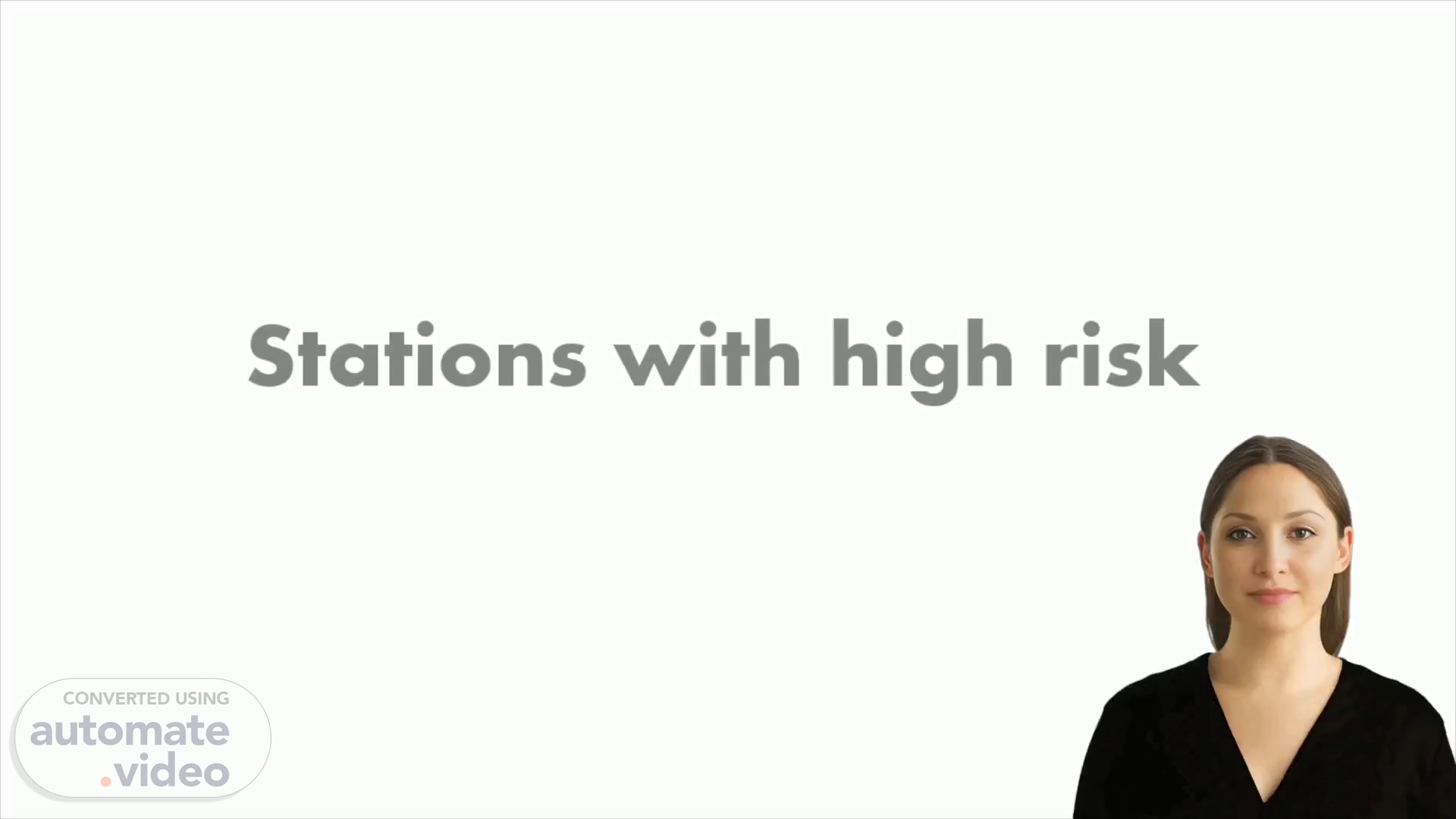
Stations with high risk
Scene 1 (0s)
[Virtual Presenter] Welcome everyone. Today, we are gathered here to discuss an important topic - how to improve the safety and operational efficiency of high-risk train stations. We will be looking into the challenges that each station faces and how to best address these issues. Let's get started!.
Scene 2 (21s)
[Audio] At high-risk stations, train drivers must keep alert and have knowledge of the potential dangers, origins, and answers. We will assess some of these stations and explore how to construct plans that ensure a secure and efficient ride for everybody..
Scene 3 (38s)
[Audio] Liverpool Street Station is renowned for its high traffic and the intricacy of its signals. With several routes, different trains travelling to various destinations, various types of traction and varying platform lengths, extra caution is necessary when navigating the station. In addition, the station is equipped with multiple train dispatch systems, requiring drivers to be agile and accurate in their execution..
Scene 4 (1m 6s)
[Audio] Drivers at Tottenham Hale Station must be aware of several factors that can potentially create challenges. Platform layout, passenger numbers and behaviour, different types of traction, and the sun bleaching of the cameras throughout the seasons can all affect the dispatch process. Congestion is likely to be particularly heavy on football match days and the Drumshed festival, so extra precautions should be taken while driving at this station..
Scene 5 (1m 35s)
[Audio] At Brimsdown and Enfield Lock stations, the presence of level crossings at the end of the platform presents a distinct challenge. Careful procedures must be put in place to minimize the risk of drivers neglecting to check signals before leaving. Adhering to these procedures is of utmost importance, as the potential repercussions of neglecting to do so are severe..
Scene 6 (2m 0s)
[Audio] At Broxbourne and Harlow Town stations, railway professionals must exercise a higher degree of caution due to the increased possibility of misreading a signal or experiencing a Signal Passed at Danger (SPAD) incident, which can lead to hazardous scenarios. Therefore, operators in these areas must stay alert to any signs that could point to potential safety risks..
Scene 7 (2m 24s)
[Audio] Safety must be prioritized at Bishop's Stortford station due to the challenges posed by a gap between the train and the platform, overcrowding, especially with school children, and sometimes a lack of platform staff. In addition, the risk increases with the presence of a yard as there is a higher chance for wrong routes, read through signals, derailments, and SPAD incidents..
Scene 8 (2m 49s)
[Audio] Safety is of paramount importance at Stansted Airport. The potential for Signal Passed At Danger (SPAD) incidents is high, so drivers should be extra vigilant when departing on a single yellow. Tourists often inquire about various things, and this could lead to distraction. Therefore, it is essential for drivers to allow themselves enough time to ensure proper preparation within the train cab..
Scene 9 (3m 17s)
[Audio] At Cambridge Station, with its eight platforms, multiple TOCs, complex signalling system, and potential for overcrowding during disruptions, we must be prepared to face some of the highest risks in the country. Drivers at this station must have comprehensive route knowledge and be aware of their platform capacities. In this article, we will explore how we can best respond to these challenges..
Scene 10 (3m 45s)
[Audio] At several of our stations, including Brimsdown, Enfield Lock, St Margarets, Elsenham and Shelford, due to the short length of the platforms and the use of 10 car services, special 10 car stop boards have had to be installed off the platforms. This creates a risk for both drivers and passengers, as passengers may accidentally travel on the wrong side of the train, activating the PEA multiple times. These particular signals also pose a challenge to the driver, as the design of the 720 driving cab prevents an easy view of the 10 car stop boards..
Scene 11 (4m 23s)
[Audio] At Stratford Station, due to the amount of business it sees, there are high risks of operational incidents such as SPADS. Drivers must be very familiar with the route and the short signalling sections along the way. Stay tuned for the next slide to learn more..
Scene 12 (4m 42s)
[Audio] It is clear that high-risk stations pose unique and critical challenges for train drivers. In order to improve safety and operational efficiency, we must implement targeted safety measures, communication protocols, and equipment maintenance strategies. By doing this, we will ensure the well-being of both passengers and crew members, while always keeping safety as the primary concern of our railway operations. With this, I thank you again for your time and attention. Drive safe!.